第43章 THE DANCING MANIA IN ITALY(6)
The music was almost wholly in the Turkish style (aria Turchesca), and the ancient songs of the peasantry of Apulia, which increased in number annually, were well suited to the abrupt and lively notes of the Turkish drum and the shepherd's pipe.These two instruments were the favourites in the country, but others of all kinds were played in towns and villages, as an accompaniment to the dances of the patients and the songs of the spectators.If any particular melody was disliked by those affected, they indicated their displeasure by violent gestures expressive of aversion.They could not endure false notes, and it is remarkable that uneducated boors, who had never in their lives manifested any perception of the enchanting power of harmony, acquired, in this respect, an extremely refined sense of hearing, as if they had been initiated into the profoundest secrets of the musical art.
It was a matter of every day's experience, that patients showed a predilection for certain tarantellas, in preference to others, which gave rise to the composition of a great variety of these dances.They were likewise very capricious in their partialities for particular instruments; so that some longed for the shrill notes of the trumpet, others for the softest music produced by the vibration of strings.
Tarantism was at its greatest height in Italy in the seventeenth century, long after the St.Vitus's Dance of Germany had disappeared.It was not the natives of the country only who were attacked by this complaint.Foreigners of every colour and of every race, negroes, gipsies, Spaniards, Albanians, were in like manner affected by it.Against the effects produced by the tarantula's bite, or by the sight of the sufferers, neither youth nor age afforded any protection; so that even old men of ninety threw aside their crutches at the sound of the tarantella, and, as if some magic potion, restorative of youth and vigour, were flowing through their veins, joined the most extravagant dancers.
Ferdinando saw a boy five years old seized with the dancing mania, in consequence of the bite of a tarantula, and, what is almost past belief, were it not supported by the testimony of so credible an eye-witness, even deaf people were not exempt from this disorder, so potent in its effect was the very sight of those affected, even without the exhilarating emotions caused by music.
Subordinate nervous attacks were much more frequent during this century than at any former period, and an extraordinary icy coldness was observed in those who were the subject of them; so that they did not recover their natural heat until they had engaged in violent dancing.Their anguish and sense of oppression forced from them a cold perspiration; the secretion from the kidneys was pale, and they had so great a dislike to everything cold, that when water was offered them they pushed it away with abhorrence.Wine, on the contrary, they all drank willingly, without being heated by it, or in the slightest degree intoxicated.During the whole period of the attack they suffered from spasms in the stomach, and felt a disinclination to take food of any kind.They used to abstain some time before the expected seizures from meat and from snails, which they thought rendered them more severe, and their great thirst for wine may therefore in some measure be attributable to the want of a more nutritious diet; yet the disorder of the nerves was evidently its chief cause, and the loss of appetite, as well as the necessity for support by wine, were its effects.Loss of voice, occasional blindness, vertigo, complete insanity, with sleeplessness, frequent weeping without any ostensible cause, were all usual symptoms.Many patients found relief from being placed in swings or rocked in cradles; others required to be roused from their state of suffering by severe blows on the soles of their feet;others beat themselves, without any intention of making a display, but solely for the purpose of allaying the intense nervous irritation which they felt; and a considerable number were seen with their bellies swollen, like those of the St.John's dancers, while the violence of the intestinal disorder was indicated in others by obstinate constipation or diarrhoea and vomiting.These pitiable objects gradually lost their strength and their colour, and creeping about with injected eyes, jaundiced complexions, and inflated bowels, soon fell into a state of profound melancholy, which found food and solace in the solemn tolling of the funeral bell, and in an abode among the tombs of cemeteries, as is related of the Lycanthropes of former times.